Under a Bottleneck Syndrome In medicine, the painful entrapment of muscles and tendons in a joint is understood. The shoulder joint is most commonly affected.
What is Bottleneck Syndrome?

© Aleksej - stock.adobe.com
The bottleneck syndrome is also called Impingement Syndrome known. These are limited mobility and function of the affected joint that are associated with pain. The reason for this is an entrapment of muscles and tendons. This means that the space within the joint is no longer sufficient for certain movements.
Bottleneck syndrome primarily affects the human shoulder. In most cases, impingement syndrome is due to an injured or degenerated rotator cuff. The arm of the affected person can no longer be raised above the level of the shoulder due to the trapping. A bottleneck syndrome can also occur in other joints such as the hip joint.
The acetabulum and the femoral head are affected by the narrowing. In rare cases, impingement syndrome also occurs in the ankle. About ten percent of all German citizens are affected by a bottleneck syndrome. The syndrome mainly shows up in men and women who are older than 50 years.
causes
The causes of a bottleneck syndrome vary. In most cases, degenerative changes in the bony musculoskeletal system are responsible for the development of the syndrome. Athletes such as swimmers, javelin throwers and handball players are particularly affected. The signs of wear and tear are further enhanced by the permanent overhead movements.
But also certain professional groups often suffer from an impingement syndrome, so that this is now considered an occupational disease. This particularly applies to professions that involve overhead work, such as welders or painters. Calcium deposits in the joint bodies or tendons can also be considered as a trigger for a bottleneck syndrome. Even a congenital form of impingement syndrome is possible.
These are deformations of the joint head, the shoulder roof or the joint socket, which result in an unfavorable shape in the joint. Another risk factor for a bottleneck syndrome is an imbalance of the muscles. This is mainly found in bodybuilders. One-sided or excessive training often disrupts the sensitive balance of the rotator cuff.
You can find your medication here
➔ Medicines for back painSymptoms, ailments & signs
The symptoms of a bottleneck syndrome depend on the affected body part. The patients suffer from acute pain in the shoulder, which intensifies when they are exerted and decreases when they are at rest. The pain shows up deep in the joint and becomes so severe at night that the patient can no longer lie on the affected side.
In addition, the arm can hardly be lifted and often hangs loosely. It is not uncommon for the painful restrictions of movement to increase in the further course and the shoulder joint to lose more and more stability. With a bottleneck syndrome in the hip joint, the symptoms are insidious.
So there is only sporadic pain, which increases with physical activity. It is not uncommon for it to radiate into the thigh. In addition, the pain becomes more intense when the patient turns the affected leg inward.
Diagnosis & course
If a bottleneck syndrome is suspected, an orthopedic surgeon who specializes in symptoms of this type should be consulted. An experienced doctor can usually make the diagnosis after describing the symptoms and examining the body. In addition, bottleneck syndrome is one of the most common orthopedic diseases.
When recording the medical history, the orthopedic surgeon usually wants to know where and in which situations the pain occurs, how long it has been going on, whether there are movement or strength restrictions, whether there are shoulder injuries and whether the patient also suffers from pain at night . The patient's occupation and sports are also of interest.
As part of the physical examination, the orthopedic surgeon checks the patient's movements and whether there are any disturbances. Special clinical function tests are carried out to confirm the diagnosis. These include the shoulder grip, the neck grip, the supraspinatus test, the Neer impingement test or the Hawkins test.
The course of a bottleneck syndrome depends on the triggering cause. In most cases, the patient has to be very patient. It can take weeks or even months for the symptoms to improve. Sometimes complications from the impingement syndrome such as tears in the rotator cuff tendon or inflammation of the bursa under the shoulder roof are possible.
Complications
As a rule, the bottleneck syndrome causes disorders of the joints and their mobility, whereby the shoulder joint is particularly affected. The patient suffers from restricted mobility and pain. The complications depend primarily on the time of treatment.
In most cases, the pain occurs when the person lifts their arm and moves their shoulder. The pain is often unbearable, so that these movements can no longer be performed. Physical activities or sporting activities are usually no longer possible due to the bottleneck syndrome.
There is a reduced quality of life. If treatment is not started early, the entire musculoskeletal system can be damaged. The treatment itself takes place through various therapies and through the administration of painkillers. So that there are no further disturbances, the person concerned must no longer put any weight on his shoulder.
If the usual therapies are unsuccessful, surgical interventions can also reduce the suffering. This means that the bottleneck syndrome can be treated relatively easily, and further complications are no longer to be feared. The bottleneck syndrome does not reduce life expectancy.
When should you go to the doctor?
Should shoulder or joint problems increase for no apparent reason, a doctor should be consulted. There is cause for concern if movement is restricted. In the case of a bad posture of the body or a one-sided physical strain due to the complaints, it is advisable to consult a doctor. The symptoms can lead to permanent damage to the skeletal system that should be corrected early on.
If usual professional or sporting activities can no longer be carried out as usual, a doctor's visit is necessary. In the event of pain or sleep disorders, a doctor is needed as soon as they recur or persist for several days.
Consultation with a doctor is required before taking any pain medication. Side effects may occur, which should be discussed and clarified in advance. In the case of emotional or mental problems due to the complaints and restrictions, a visit to the doctor is recommended.
If mood swings occur, general well-being decreases or behavioral problems occur, a therapist is needed. A depressed emotional state, apathy and a general malaise should be discussed with a doctor.
If symptoms such as restlessness, headaches or listlessness persist over a longer period of time, the risk of suffering additional mental illnesses increases. A doctor's visit is therefore necessary in order to develop solutions to the problems that arise in good time.
Doctors & therapists in your area
Treatment & Therapy
Treatment of bottleneck syndrome usually has to be individually tailored and can include various options. If conservative therapy takes place, the patient receives pain medication and physiotherapy. He also has to take it easy. This means that he should refrain from heavy physical work and sports. Acetylsalicylic acid or ibuprofen are given to relieve the pain.
If conservative therapy does not lead to improvement, surgical intervention can be useful. The aim of an operation is to remove the mechanical constriction by changing the structures. Surgical intervention is recommended, especially for younger patients. As a rule, only minimally invasive procedures such as arthroscopy are used. With the help of an endoscope, the surgeon gives the affected joint more freedom of movement.
Outlook & forecast
The bottleneck syndrome promises a positive prognosis. Patients who have the condition treated comprehensively and who adhere to the doctor's instructions regarding rest and physiotherapy usually recover within a few weeks to months. Long-term effects rarely occur in the bottleneck syndrome.
Therapy can only last longer in the case of severe illnesses associated with fractures, signs of wear and tear and other complications. In individual cases the syndrome develops into a chronic condition that permanently restricts those affected. Older patients in particular often no longer fully recover from the bottleneck syndrome.
The bottleneck syndrome does not affect the life expectancy of the patient. However, the condition favors other diseases of the joints, tendons and bursa. This can limit the quality of life over a longer period of time and possibly lead to serious complications. The orthopedic surgeon in charge can make the prognosis based on discussions with the patient and physical examinations. The course of the disease provides information about the healing prospects and also shows the risk of any complications.
If the therapy is continued closely and supported by self-help measures, healthy patients without concomitant illnesses or other physical or mental complaints have the prospect of recovery.
You can find your medication here
➔ Medicines for back painprevention
Preventing a bottleneck syndrome is only possible to a limited extent. Good posture, enough exercise, regular training of the rotator cuff and relaxation of the shoulder muscles are recommended.Caution is advised in high-risk sports such as tennis, handball, javelin throwing, swimming or volleyball.
Aftercare
In the case of bottleneck syndrome, the options for follow-up care are usually very limited. As a rule, direct medical treatment by a medical professional is necessary first in order to treat the syndrome correctly and completely. Since this cannot lead to an independent healing, the person affected is always dependent on treatment by a doctor. This is the only way to prevent further complications.
In most cases the bottleneck syndrome is treated with the help of a surgical procedure. There are no particular complications. The affected person should rest after the procedure and take care of his body. You should refrain from exertion or other stressful activities in order not to unnecessarily burden the body. Stress should also be avoided in general, whereby a healthy lifestyle of the person affected can have a positive effect on the further course of the disease.
In some cases, patients with bottleneck syndrome also rely on the help and support of friends and family in order to cope with everyday life. Above all, the intensive and loving care has a positive effect. It can also be useful to contact other patients with the bottleneck syndrome.
You can do that yourself
If the mobility and function of a joint are impaired, those affected should always consult a doctor promptly. What the patient himself can contribute to the therapy of the bottleneck syndrome depends on its causes and the specific symptoms.
Bottleneck syndrome often occurs in professional groups who work overhead. These include craftsmen such as bricklayers, painters and carpenters, but also workers from the metalworking industry. Members of a risk group should consult a doctor, preferably an experienced orthopedic surgeon, at the first signs of a bottleneck syndrome.
If the suspicion of bottleneck syndrome is confirmed, a series of behavioral adjustments are usually required. The affected joint often has to be spared for a long time. Depending on the occupation and the severity of the symptoms, this can mean that certain activities may no longer be carried out, longer work breaks are required or the person concerned has to take a complete break for a long time.
Since the bottleneck syndrome is recognized as an occupational disease in Germany, the patients are financially relatively well protected. In any case, those affected should immediately seek advice from their health insurance company, their union or the works council.
If the doctor prescribes physiotherapy, it is important that the patient actually starts it and implements it consistently. Exercising the rotator cuff regularly is important to prevent further degeneration of the musculoskeletal system.

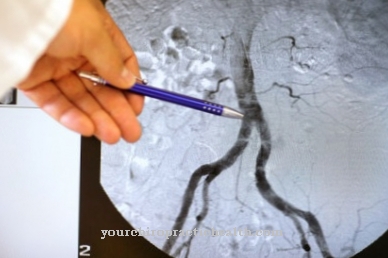
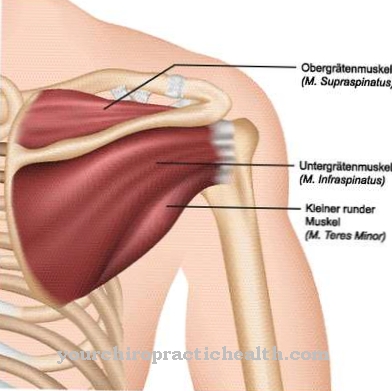

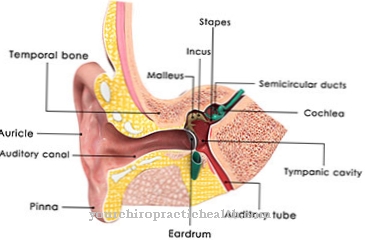
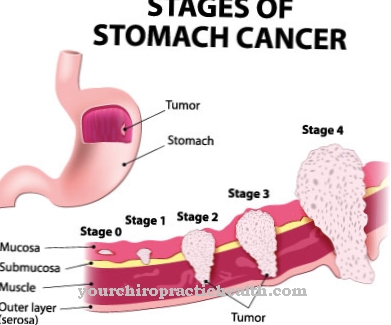
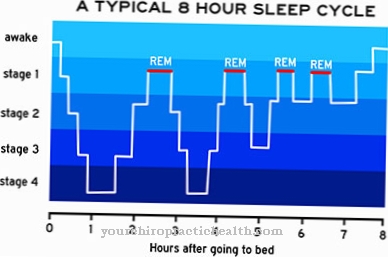

















.jpg)



